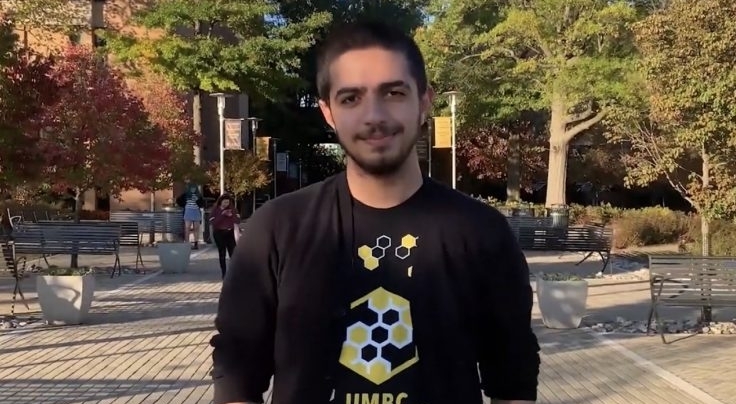For one UMBC student working on her dissertation in robotics, the grind never stops. Even when she is completing monumental tasks for others against the pressure of a crippling disease: spinal muscle atrophy.
SMA is a degenerative disease that affects voluntary movement. According to the U.S. National Library of Medicine, “Spinal muscular atrophy is a genetic disorder that affects the control of muscle movement. It is caused by a loss of specialized nerve cells [motor neurons] … in the spinal cord. In severe cases of spinal muscular atrophy, the muscles used for breathing and swallowing are affected.”
Kavita Krishnaswamy, a user of assistive robotics, is an innovator in helping people with limited mobility like herself.
For her dissertation, Krishnaswamy is creating a pressurized mattress controlled by a track pad or by voice. It inflates at nine different spots to avoid bed sores and allow pressure relief for users; specifically those who are disabled and may need aid to move.
The dissertation is based off of an already existing tool; a mattress with nine inflatable chambers, but needs a caregiver to inflate and deflate each chamber, rather than the user itself.
The thirty five-year-old created this prototype by responding to a need in assistive robotics. While the field of assistive robotics is growing and adapting, most robots are only effective for those with moderate mobility. So Krishnaswamy, whose disease sapped her strength over time, designed the mattress to increase accessibility for those with extremely limited mobility.
Krishnaswamy’s primary goal is to allow as much independence as possible for these individuals. And, like most user-friendly devices, she needs to ensure that her prototype will not cause harm to the user.
“More work is needed in safety and robotics; it needs to recognize when someone is in danger, as a robot is not intelligent,” she said. For assistive robotics, technology needs to be designed with a safe range of mobility, otherwise the user could be harmed.
This dilemma then creates the need for artificial intelligence technology, an entire other level of computing and design.
“The more ways people with the barest, smallest movement can express their input through technology, is an advancement,” explained Krishnaswamy. She added that thinking outside the box is necessary in order for these projects to be born, for needs to be met and ultimately so those who need this aid can receive it.
While she has always had a brain for maths and sciences, being a member of special achievement clubs in high school, her first brush with robotics came when she entered a statewide competition. She submitted a robot she designed via computer which she had her younger brothers build. Her passion blossomed into a career path and a dissertation proposal, of which she is now working on.
Krishnaswamy is working with an engineering group of UMBC students, but is always in need of volunteers during the development of the prototype. Prospective workers can contact her via email (kavi1@umbc.edu) or through her website.

